Thesis
The manufacturing sector is grappling with a labor shortage, with projections indicating that 2.1 million US manufacturing jobs could go unfilled by 2030. Attracting and retaining manufacturing workers has become increasingly challenging, with 65% of manufacturers citing it as their top concern in 2024. If open positions in manufacturing remain unfilled, according to one 2021 study, the potential negative impact on the US economy could exceed $1 trillion by 2030.
Similar labor shortages are occurring in other industries. For example, the US is facing a worsening healthcare staffing crisis. By 2025, the US will have a shortage of up to 450K registered nurses. The issue is intensified by administrative burdens. A 2020 study tracking the activities of 57 physicians found that 49.2% of their time was spent on administrative duties, leaving only about 27% for direct patient care. This administrative burden limits time for direct patient interactions, highlighting the potential need for streamlined processes to improve patient outcomes.
Robots are one solution to labor shortages. There are more than 3.4 million industrial robots in use worldwide as of February 2024. For example, the automotive industry has implemented robotic arms and autonomous-guided vehicles, However, while advances in 3D sensor technology allow robots to navigate environments with high precision, many robotic systems lack the datasets they would need to perform autonomously. Consequently, only companies with substantial resources can afford the costly, individualized training necessary to implement automation at scale. As of October 2024, one robot with AI capabilities can cost more than $100K.
Skild AI is building a general-purpose brain for robots. It aims to create a flexible, scalable AI platform that enables robots to perform a variety of tasks across different environments. Unlike traditional robotic systems that require task-specific datasets, Skild AI’s model allows robots of any form, humanoid or quadruped, to learn and adapt to new tasks without needing pre-programmed instructions. This AI model is designed to enhance robots’ ability to perform tasks such as navigation, manipulation, and interaction with their surroundings in diverse settings. Skild AI’s solution is particularly aimed at addressing labor shortages in industries like healthcare, manufacturing, and construction, by automating routine or hazardous tasks with affordable, versatile robots.
Founding Story
Skild AI was founded in 2023 by Deepak Pathak (CEO) and Abhinav Gupta (President) with the goal of building a general-purpose robotics operating system. The two co-founders, who were both former professors at Carnegie Mellon’s computer science program, left their academic teaching positions to pursue this vision.
Pathak’s career began in India, where he learned programming by writing code on paper and using limited internet time at a cafe to test it. He attended the Indian Institute of Technology for his undergraduate studies, earning a gold medal for achieving the highest academic performance in computer science in 2014. Immediately after, he pursued a PhD in AI at Berkeley, where he co-founded VisageMap, a facial recognition startup acquired by FaceFirst in 2015. In 2017, Pathak developed a technique for instilling "artificial curiosity" into robots and published a paper on it, amassing over 4K citations as of July 2024. After completing his PhD, he joined Facebook AI Research (FAIR) in 2019.
Gupta also began his academic journey in computer science at the Indian Institute of Technology in 2000. After completing undergrad, he pursued a PhD in computer science at the University of Maryland in 2004. He began serving as a professor at Carnegie Mellon’s Robotics Institute in 2009 after receiving his PhD. Then in 2018, he joined FAIR as a founding member and research leader, focusing on advancing AI and robotics. His work, which spans areas like robotic manipulation, locomotion, and navigation, has been cited over 75K times as of November 2024.
Pathak and Gupta have been credited for numerous contributions to the field of robotics such as self-supervised robotics, curiosity-driven agents, and adaptive robot learning. Their research culminated in 2021 and 2022 when they developed an approach to large-scale adaptive SIM2REAL (simulation-to-reality) training, which earned them the Best Robotic System Award at the Conference on Robotic Learning.
The idea for Skild AI had been brewing for nearly a decade before its founding, as Gupta and Pathak often discussed launching a company together while working at FAIR. In early 2023, they recognized the rapid progress in the field, much of it stemming from their work, and decided it was the right time to scale their impact through Skild AI, which officially emerged from stealth in July 2024.
Product
Skild AI is developing a foundational operating system designed to power a broad spectrum of industrial and personal robots, enabling safe human-robot interactions. The aim is to facilitate the widespread adoption of mobile robots by creating a model that can adapt seamlessly to new environments, such as construction sites and factories, without needing retraining. By focusing on adaptability and safety, Skild AI seeks to overcome key obstacles to deploying mobile robots across various industries and settings.
Robotics Foundation Model
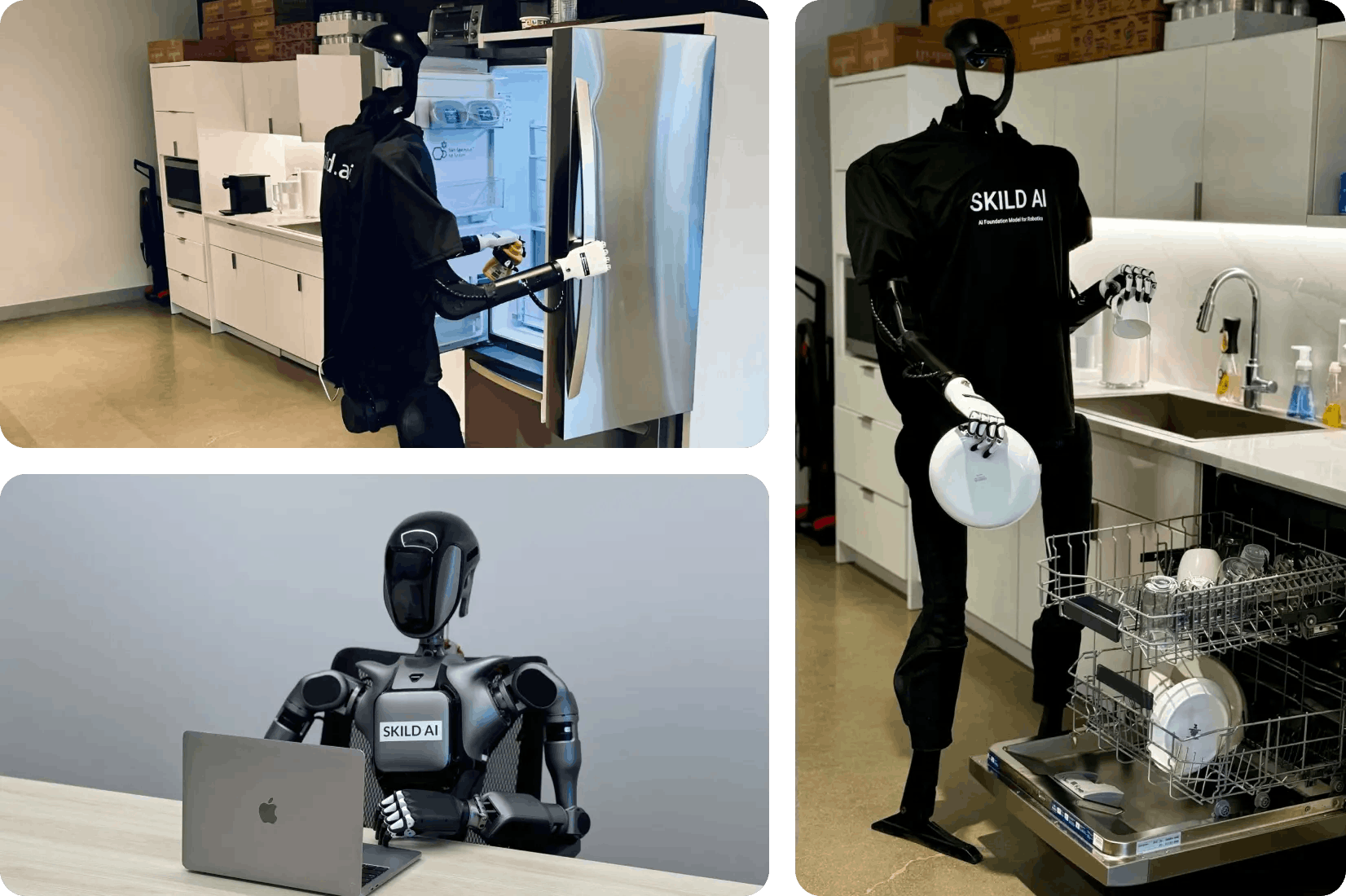
Source: Skild AI
Skild AI is developing a scalable robotics foundation model, also known as the Skild Brain, designed to serve as a shared, general-purpose brain for diverse robots across various scenarios and tasks. The model aims to enable adaptability across different hardware platforms and environments, from construction sites to factories to homes. Skild AI CEO Deepak Pathak claimed that “the large-scale model we are building demonstrates unparalleled generalization and emergent capabilities across robots and tasks, providing significant potential for automation within real-world environments.”
Skild AI’s robotics foundational model is trained on 1K times more data points than competing models, including data from human-operated robots and millions of public videos. It has been designed to operate in unstructured settings without retraining for new environments. Skild AI aims to enable robots using its operating system to execute any task, in any environment, on any hardware platform.
Mobile Manipulation Platform
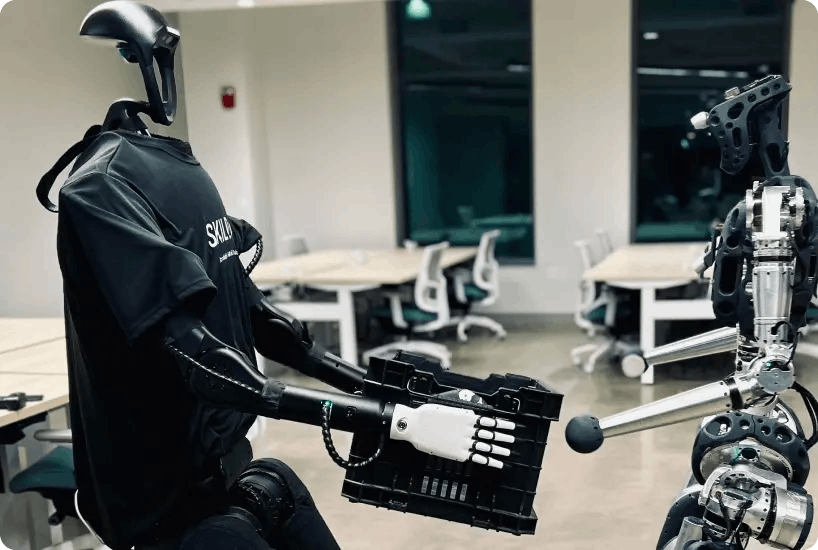
Source: Skild AI
Skild AI offers a mobile manipulator platform powered by its foundation model, allowing developers to build robotics applications through API calls. It’s designed to make robotics development more accessible. The goal is to simplify the development of high-level algorithms and specialized robots to function as API integrations. This flexibility will enable Skild AI-powered robots to operate in a wide range of environments independent of each other.
Security & Inspection Robot Platform
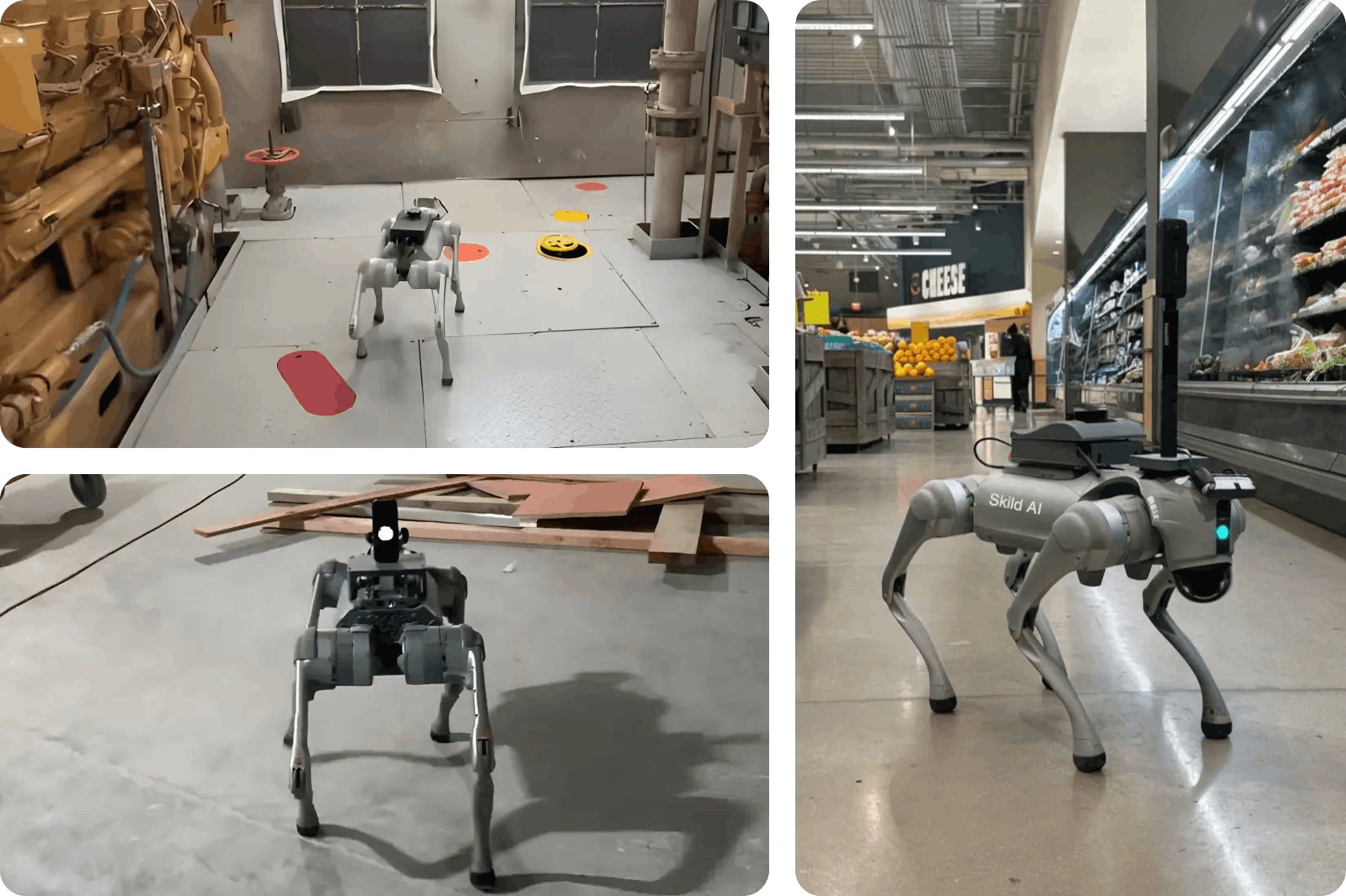
Source: Skild AI
Skild AI also provides full-stack robotic solutions for visual inspection, data collection, and patrolling tasks. The company is starting by providing robots for use in industrial settings, though detailed information on its security/inspection robot platform is limited as of November 2024.
Market
Customer
Skild AI targets industries facing labor shortages, including healthcare, construction, warehousing, and manufacturing. The company focuses on developing AI models for robotics to address tasks that are dangerous or need to be conducted alongside people. As Skild AI is developing its product as of November 2024, its immediate customers are likely to be research institutions and robotics companies looking to integrate advanced AI into their systems. As of November 2024, Skild AI does not have any reported customers and stated its funding will be used to scale its foundational model and build out its team.
Market Size
The global talent shortage is expected to reach 85.2 million people by 2030, potentially costing up to $8.5 trillion in lost economic opportunity. This could create a potential opportunity for robots and AI-powered solutions like Skild AI.
The humanoid robot market, which Skild AI's technology could serve, was estimated at $1.3 billion in 2023 and is projected to grow at a CAGR of 17.3% from 2024 to 2030. Goldman Sachs forecasts that the TAM for humanoid robots could reach $38 billion by 2035, an increase from its previous projection that was made in 2022 of $6 billion.
In the industrial sector, the potential market for humanoid robots is expected to grow from 252 million workers in 2024 to 400 million by 2035. The TAM is estimated to be roughly $1.8 trillion as of March 2024. Additionally, if humanoids can be utilized in, for example, up to 15% of the 1.5 billion global households by 2035 at an average selling price of $10K to $15K, the TAM for household humanoids could reach $2.8 trillion.
Competition
Horizontal Approach
Companies taking a horizontal market approach are creating layers of abstraction for robotics developers. They are focused on broad machine-learning models that make robotics hardware capable of interacting with the physical world.
Sanctuary AI: Founded in 2018, Sanctuary AI has raised over $140 million and was valued at $239 million as of November 2024 according to secondary markets. Notable investors in Sanctuary AI include Workday Ventures, Verizon Ventures, and Accenture Ventures. The company focuses on creating humanoid robots called Phoenix, along with an AI control system called Carbon, to produce machines capable of performing a wide range of human-like tasks.
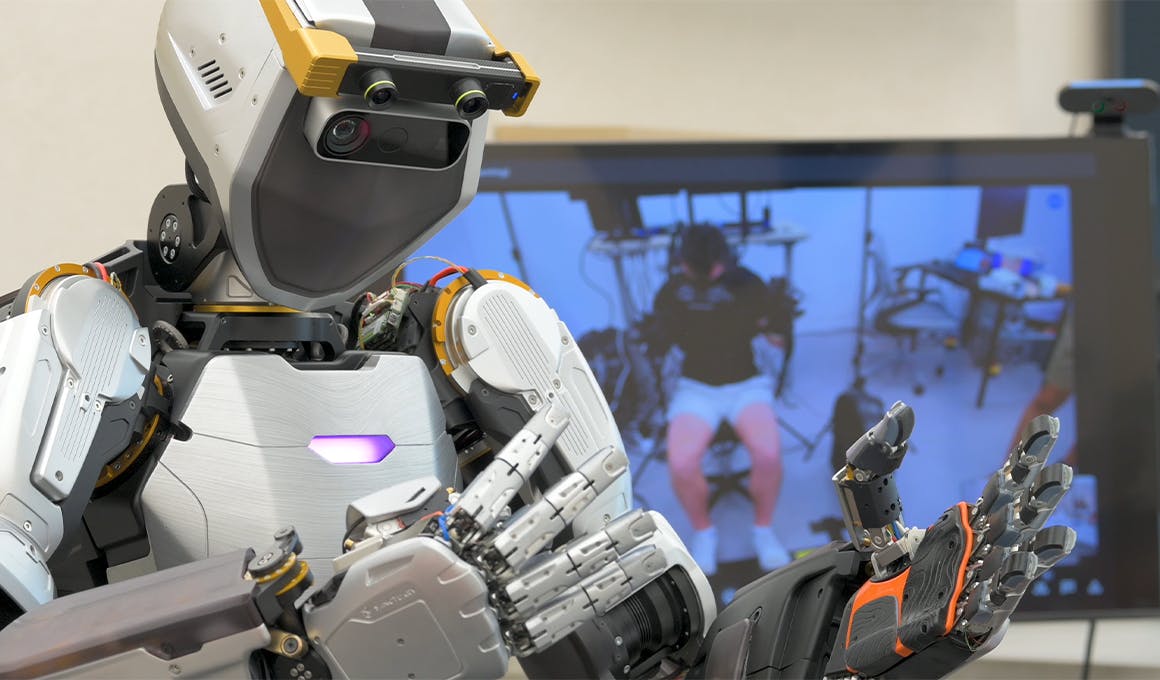
Source: Sanctuary AI
Sanctuary AI can be considered a competitor to Skild AI, as both companies focus on advancing robotics through AI for applications in complex, human-like tasks. While Skild AI aims to provide a foundational model adaptable to diverse industrial and personal robots, Sanctuary AI is also developing intelligent robots for physical tasks that traditionally require human intervention, emphasizing safe human-robot interaction and adaptability to various environments.
Physical Intelligence: Founded in 2024, Physical Intelligence is developing foundation models and learning algorithms for general-purpose AI in robotics that can be applied across a broad range of applications. It has raised a total of $470 million from investors including Thrive Capital, OpenAI, Lux Capital, Khosla Ventures, and Sequoia Capital. It was valued at $2.4 billion as of November 2024.
Both Skild AI and Physical Intelligence aim to develop foundational AI models to power various types of robots across multiple industries, providing them with versatile "brains" or operating systems that allow robots to handle complex physical tasks autonomously in diverse environments. While Skild AI focuses on models that enable safe human-robot interactions and adaptability in industrial settings, PI is also creating a "general-purpose AI" designed to control any robot without needing separate, task-specific programming.
OpenAI: Founded in 2015, OpenAI has raised a total of $21.9 billion and is valued in secondary markets at $157 billion as of November 2024. While primarily known for language models and consumer AI technologies, it has been researching applying neural networks to human tasks through robotics. OpenAI expanded into the humanoid robotics field in March 2024 through its partnership with Figure. Through this partnership, OpenAI supports Figure with advanced AI models, likely aiming to enable robots to understand and act on human language, which is also a focus for Skild AI’s adaptable, task-oriented robotics in industries like manufacturing and warehousing.

Source: OpenAI
Covariant: Founded in 2017, Covariant is an AI robotics company that develops systems to enable robots to see, reason, and act in complex warehouse environments. Its flagship product, the Covariant Brain, powers robotic automation solutions for various picking and sorting tasks in logistics and fulfillment operations. Amazon announced in August 2024 that it hired Covariant’s founders and about a quarter of the company's employees. Amazon also signed a non-exclusive license with Covariant to use its robotic foundation models. The company has raised $222 million over five funding rounds, granting Covariant a $625 million valuation as of November 2024.
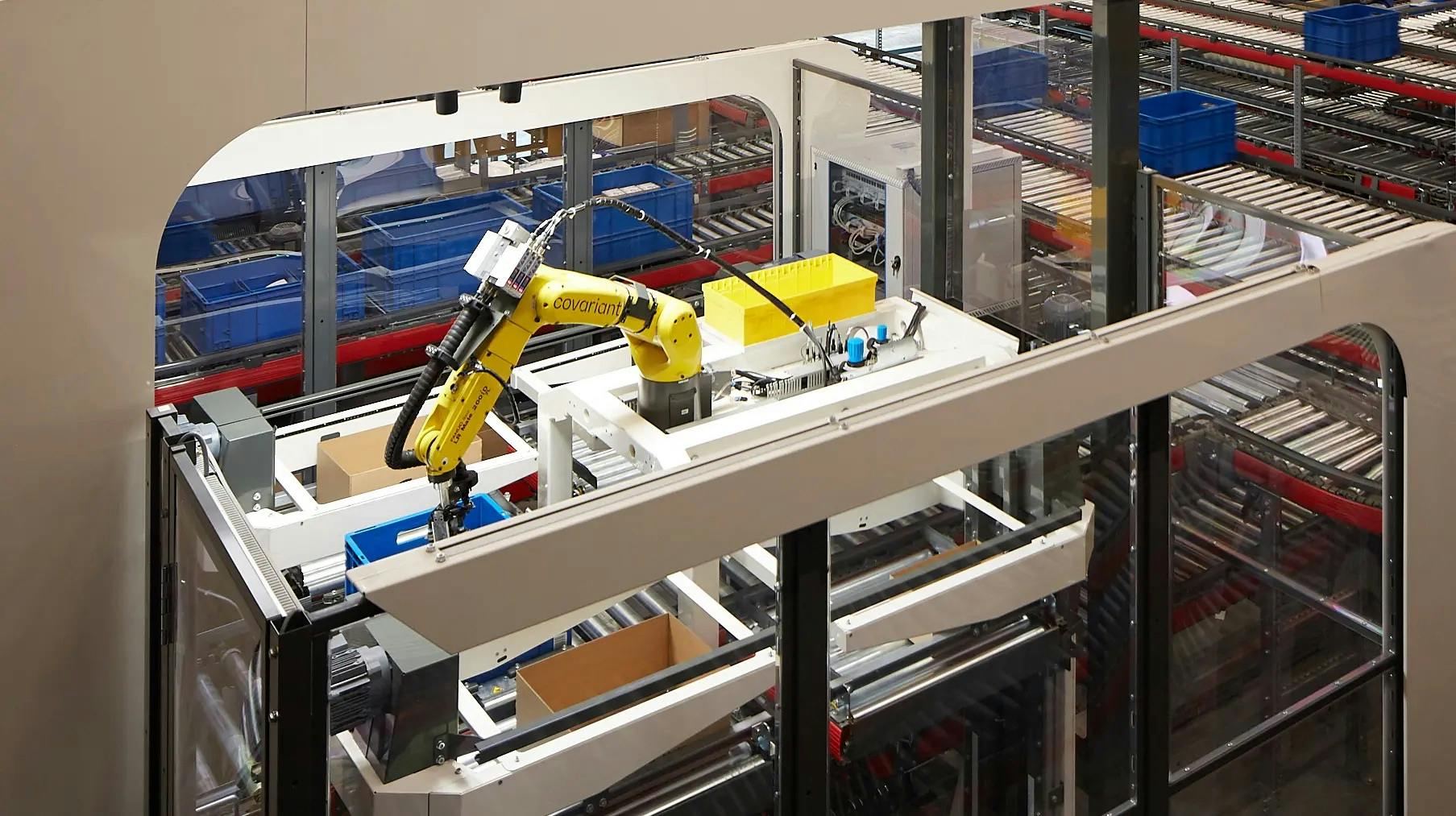
Source: Covariant
Like Skild AI, Covariant aims to address industrial automation using AI-driven robotics. Covariant's Covariant Brain platform enables robots to adapt to complex and dynamic environments, especially in warehouse and fulfillment centers, by leveraging foundation models and fleet learning to ensure high levels of operational autonomy across various applications like picking and kitting. This focus on adaptable robotic intelligence to automate repetitive and complex tasks in industrial settings parallels Skild AI’s ambitions, creating potential overlap in customer segments and use cases across industries facing labor shortages.
NVIDIA: Founded in 1993, NVIDIA provides an ecosystem of hardware, software, and tools for robotics developers. It’s developing general-purpose AI foundation models and platforms for robotics, including Project GR00T for humanoid robots. The company also offers its Isaac robotics platform with tools like Isaac Manipulator and Isaac Perceptor, while providing hardware solutions such as the Jetson Thor computer.
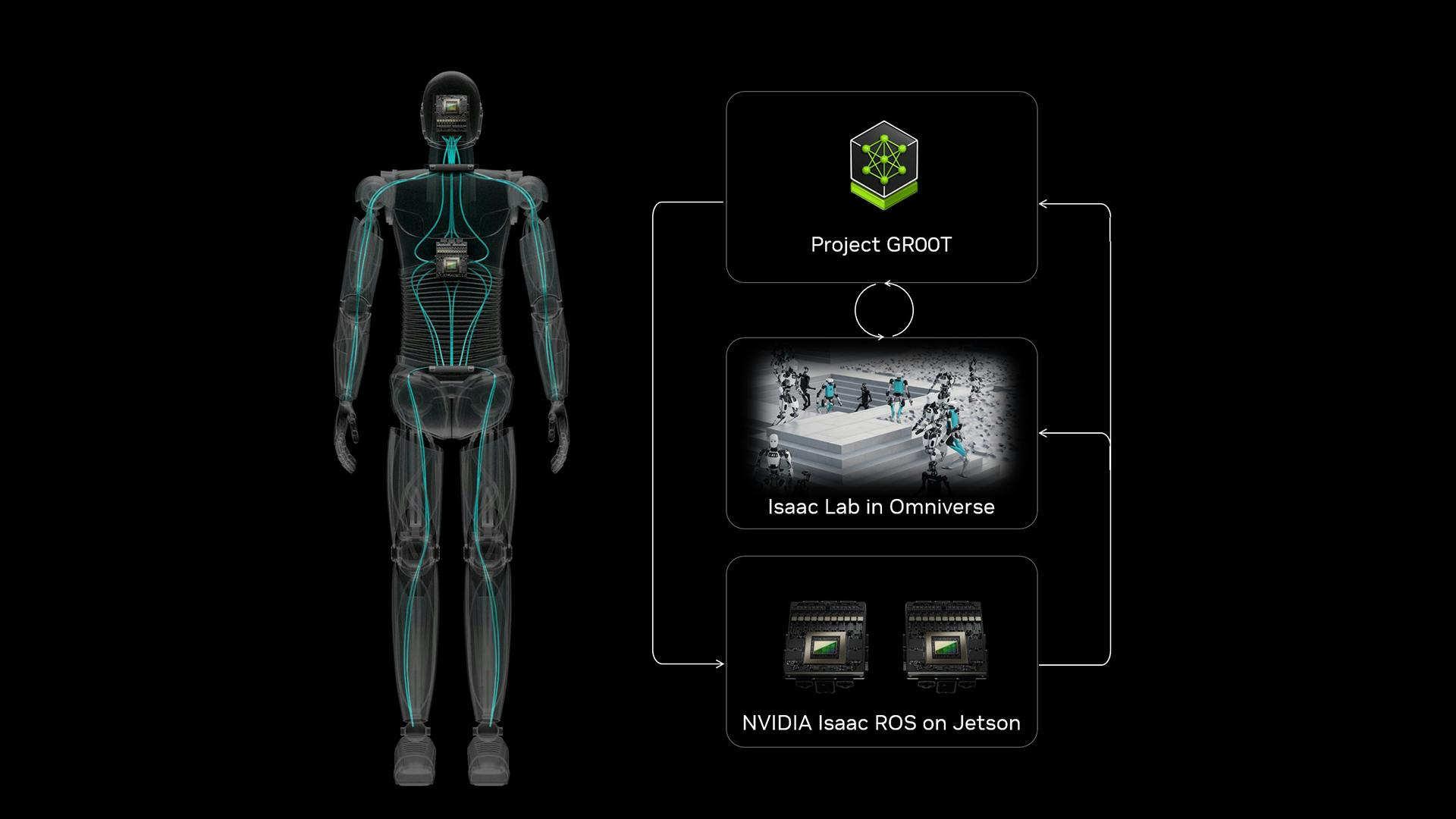
Source: NVIDIA
NVIDIA’s Project GR00T aims to develop adaptable AI general-purpose foundation models and tools for humanoid robots. NVIDIA’s platform, equipped with generative AI and reinforcement learning capabilities, is intended to power robotic functions that allow for human-like adaptability and interaction, similar to Skild AI’s vision of versatile robotic systems that operate alongside people in various environments. This overlap in focus on AI-driven robotics for diverse applications positions them as potential competitors.
Vertical Approach
Companies with a vertical market approach design both robotics hardware solutions and AI models or brains for a specific set of problems in a given vertical.
Figure: Founded in 2022, Figure is a robotics company developing humanoid robots that combine AI with human-like form and functionality. Its latest model, Figure 02, is designed to perform a wide range of tasks across commercial applications in industries like manufacturing, logistics, and warehousing. The company raised a $675 million Series B in February 2024 from notable investors like Microsoft, NVIDIA, OpenAI, ARK Venture Fund, and Bezos Expeditions. Over five funding rounds, Figure AI has raised a total of $854 million and is valued at $2.7 billion as of November 2024.
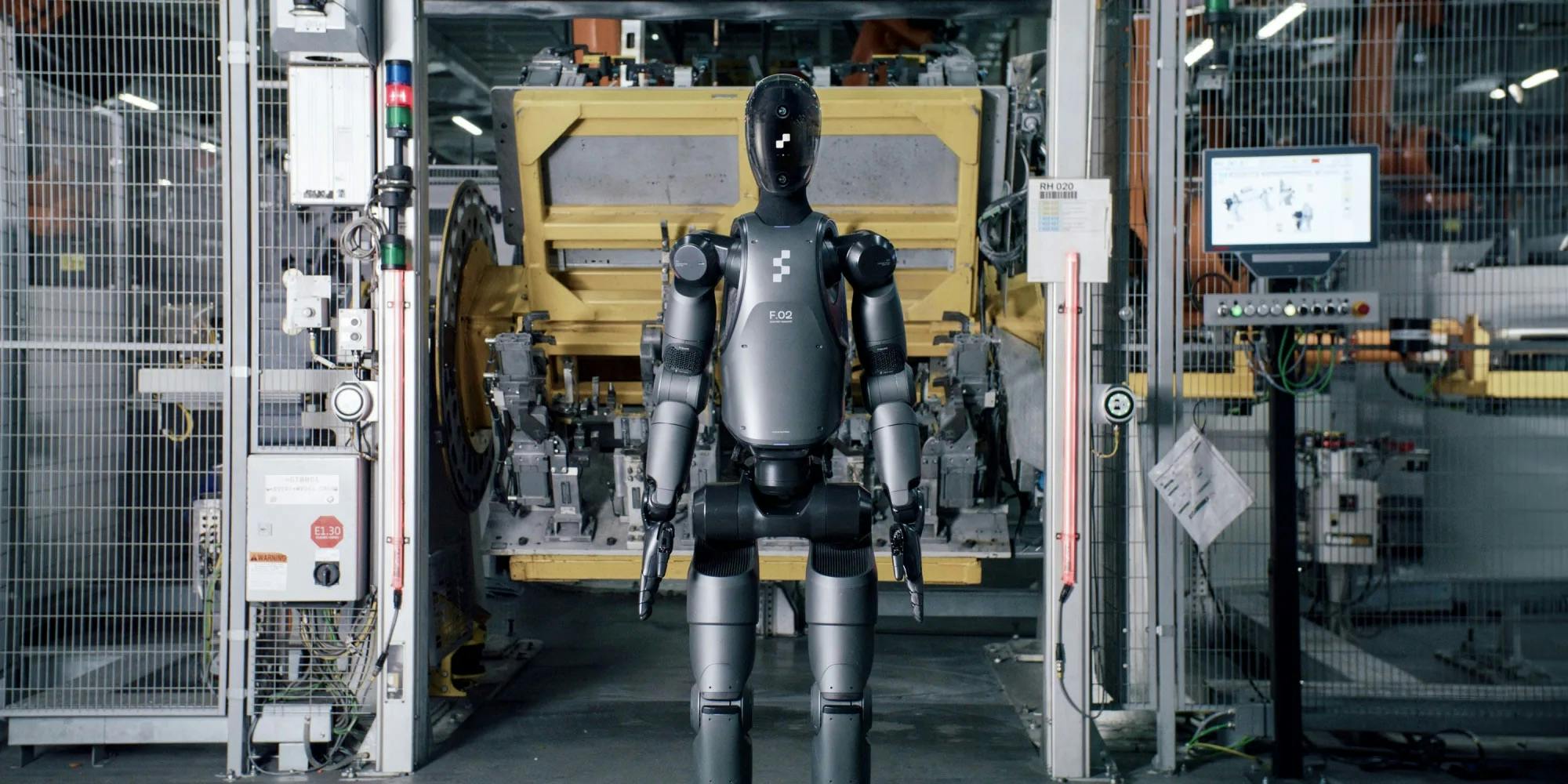
Source: Figure AI
Figure has both similarities and differences with Skild AI. Both companies are focused on creating general-purpose AI solutions for robots to work alongside humans in dynamic settings like manufacturing and logistics. However, while Figure develops both the hardware and AI capabilities in-house, Skild AI is solely focused on building an adaptable AI “robot brain” software that can integrate into various robotic hardware produced by other manufacturers, targeting similar industries facing labor shortages.
1X: Founded in 2014, 1X aims to create an abundant supply of labor through humanoid robots that can work alongside humans in various settings, from industrial applications to everyday home assistance. It’s designing robots capable of performing human-like movements and behaviors. 1X announced an in-home robot that is intended to assist in household tasks called NEO Beta in August 2024. The company raised a $100 million Series B in January 2024 from EQT Ventures, bringing its total funding amount to $136.5 million across eight rounds as of November 2024. 1X has raised from notable investors like OpenAI’s Startup Fund and Tiger Global Management and its valuation is $210 million as of November 2024.

Source: 1X
1X can be seen as a competitor to Skild AI, particularly in the area of AI-driven robotics aimed at supporting labor across various industries. While Skild AI focuses on developing adaptive, general-purpose AI models for robots, 1X develops humanoid robots like NEO and EVE that incorporate its own AI systems to perform diverse, human-centric tasks. Both companies target industries facing labor shortages, although 1X is specifically progressing toward consumer-facing applications and commercial deployments in industries such as logistics and warehousing.
Tesla: In September 2022, Tesla announced it was beginning development on a humanoid robot called Optimus. Tesla’s second-generation robot, Optimus Gen 2, is being developed as a general-purpose machine for commercial use in manufacturing, construction, healthcare, and entertainment. Tesla is focused on developing a physical humanoid robot with its own proprietary AI and hardware.
Both Skild AI and Tesla are focusing on developing AI-driven robots that can perform general-purpose tasks in environments such as manufacturing, logistics, and other labor-intensive settings. Tesla's Optimus is designed as a humanoid robot equipped with AI for tasks like assembly, carrying heavy objects, and interacting with humans, while Skild AI aims to develop adaptable robots that can operate in diverse environments without requiring retraining. However, Tesla's approach places a strong emphasis on humanoid robots, which may overlap with some of the use cases Skild AI is targeting, such as industrial labor and human-robot interaction.
Business Model
While Skild AI’s monetization plans are still developing as of November 2024, potential revenue streams for the company include offering API access, allowing customers to pay for usage of Skild's AI model in their robotic applications. Additional income could come from fine-tuning services, where Skild helps customers adapt its model for specific use cases. Licensing agreements could also generate revenue, allowing companies to integrate Skild's AI into their robotic products.
Traction
As of July 2024, Skild AI's foundational model demonstrated advancements, with robots operating on it exhibiting emergent behaviors like the ability to avoid obstacles and manipulate objects when robots’ fingers might slip or get stuck. These adaptive skills were not pre-programmed, highlighting the model’s ability to learn and adjust autonomously. said Stephanie Zhan, Partner, Sequoia Capital. In July 2024, Stephanie Zhan, partner at Sequoia Capital, stated:
“A GPT-3 moment is coming to the world of robotics. It will spark a monumental shift that brings advancements similar to what we’ve seen in the world of digital intelligence, to the physical world. Since partnering with Skild AI at the seed round, I have deep conviction that they are the team to pursue one of the most ambitious visions of our era.”
In early 2024, Lightspeed partner Raviraj Jain observed Skild AI’s "AI brain" undergoing rigorous testing across different robots. He noted that Skild AI robots were successfully handling unfamiliar tasks, including stability feats like stair climbing.
Valuation
In July 2024, Skild AI raised its first round of funding, a $300 million Series A round, at a $1.5 billion valuation. This represents the company’s only round of funding as of November 2024. The round was led by Lightspeed Venture Partners, Coatue, SoftBank Group, and Bezos Expeditions, with participation from Felicis Ventures, Sequoia Capital, Menlo Ventures, General Catalyst, CRV, SV Angel, Carnegie Mellon University, the Amazon Industrial Innovation Fund, and the Alexa Fund. The company plans to use the Series A funding to scale its AI model, train datasets, and build its team.
Key Opportunities
Addressing Labor Shortages
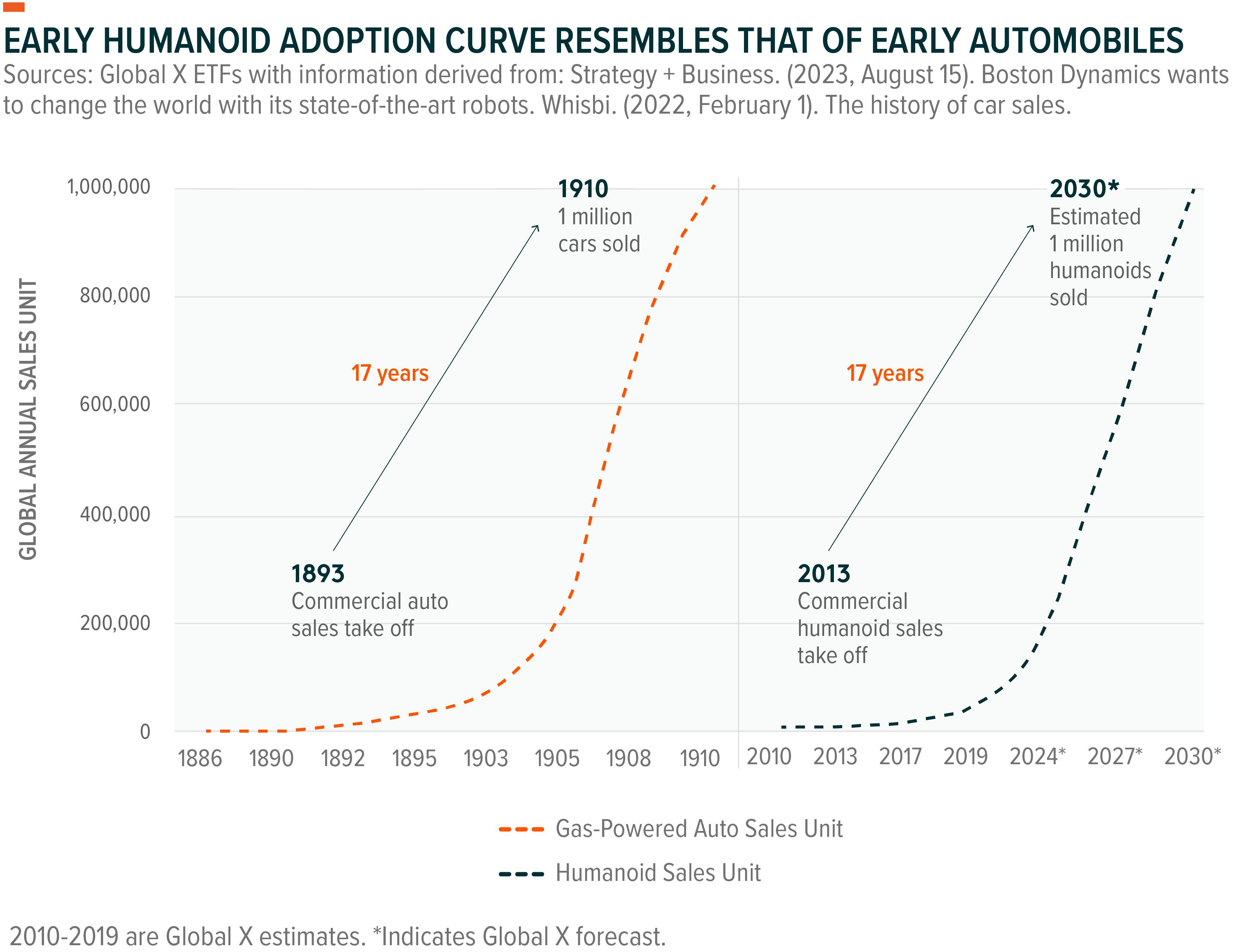
Source: Global X
Labor shortages across industries present a significant opportunity for Skild AI. With manufacturing alone potentially reaching unprecedented job vacancy levels, the demand for robotic solutions is likely to increase. Skild AI's general-purpose robots could fill gaps in sectors suffering from severe labor shortages such as manufacturing, security, and healthcare. Goldman Sachs Research predicts that humanoid robots will become the next "must-have" device for businesses to fill these gaps as “such robots would be vital for manufacturing and dangerous work, but they would also help with elderly care and fill in for labor shortages in factories.”
Disrupting the Physical Economy
Skild AI has the potential to transform dangerous and hazardous jobs across multiple sectors. Sri Viswanath, General Partner at Coatue and former CTO of Atlassian said:
“With Skild’s technology, there is potential to disrupt today’s physical economy, bringing robots to hazardous jobs such as in machine rooms, containments, etc., and to sectors suffering huge labor shortages such as in security and hospitals.”
Skild AI's robots could be deployed in high-risk environments such as machine rooms, containment areas, and disaster rescue operations. This capability addresses a potential need in industries where human workers are reluctant to perform dangerous tasks. Additionally, Skild AI's technology could revolutionize sectors like car manufacturing, with projections suggesting a labor substitution rate of between 5% and 15% in this industry by 2035.
Lower Robotics Costs
Skild AI's approach to working with off-the-shelf mechanics and relatively inexpensive machines gives it a potential competitive advantage. This strategy aligns with the trend of decreasing robot component costs, which have dropped from between $50K-$250K per unit in 2022 to $30K-$150K in 2023. The cost is expected to decline 15-20% per annum as of February 2024.
By making robotic solutions more affordable and accessible, Skild AI could expand its market reach beyond industrial applications to eventually enter the consumer robotics market. Goldman Sachs projects more than 250K humanoid robot shipments by 2030, with consumer robot sales potentially exceeding a million units annually within a decade. Elon Musk predicts there will be one billion humanoid robots on Earth by 2040.
Key Risks
Automation Readiness
Manufacturers and warehouses lack automation infrastructure, and end users are often unsure how to begin deploying robots. This creates a challenging go-to-market environment for robotics companies like Skild AI, as potential customers may not be prepared to adopt or integrate new technologies. The gap between cutting-edge robotics solutions and the readiness of target industries could slow adoption rates and impact Skild AI's growth trajectory.
The gap between Skild AI's cutting-edge solutions and the readiness of target industries could slow adoption, requiring the company to invest in tailored onboarding strategies, pilot programs, and partnerships to demonstrate value. Moreover, Skild AI may need to target industries where automation readiness is higher or develop modular solutions that integrate incrementally with existing systems, lowering the barrier to entry. Addressing these hurdles could determine the company’s growth trajectory and influence its ability to scale in the broader robotics market.
Commercialization Challenges
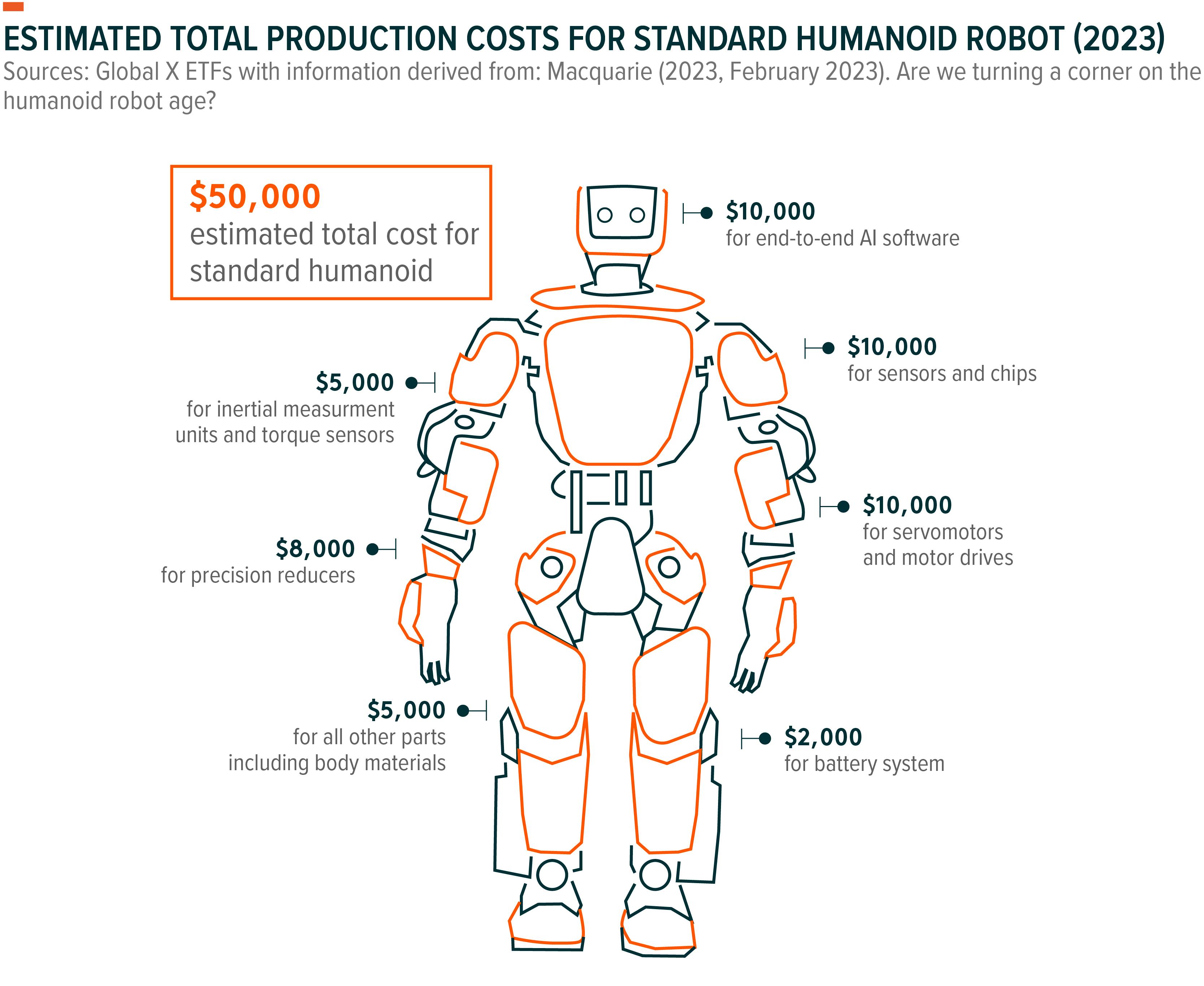
Source: Global X
While component costs for robotics are decreasing and supply chain options are expanding, Skild AI still faces significant hurdles in scaling production. Some critical components require high-precision manufacturing processes with limited industrial capacity, potentially constraining production ramp-up. These bottlenecks could impact Skild AI's ability to generate demand. If Skild AI can't secure a consistent supply of these high-quality parts, it may face delays in meeting demand, impacting both its growth prospects and ability to scale competitively.
Infrastructure Requirements
Developing advanced AI for robotics requires massive computational infrastructure, similar to that used for LLMs like ChatGPT. Skild AI may need to invest heavily in GPU clusters or cloud computing resources. Reliance on third-party infrastructure providers like Amazon Web Services could also introduce dependencies and cost uncertainties as Skild AI scales its development efforts.
While the company’s $300 million funding round provides financial resources to expand, practical barriers remain. For example, its robotics systems rely on high-speed data processing and extensive computational power, which require robust infrastructure that many potential clients may lack. Furthermore, high-performance data centers and reliable connectivity are essential for Skild AI’s robotics models to function optimally in real-world applications, and the availability of such infrastructure may be limited. These limitations may hinder the deployment and adoption of Skild AI’s technology, making infrastructure readiness a critical risk factor for the company’s growth in its target markets.
Summary
Skild AI is building a general-purpose brain for robots to address the growing labor shortage. Founded in 2023 by former Carnegie Mellon professors, the company is developing a scalable robotics foundation model designed to enable adaptability across different hardware platforms and environments. Skild AI's product offerings include a mobile manipulation platform and security/inspection robot solutions powered by their AI model.
The company operates in a rapidly growing market, with the global humanoid robot market projected to reach $38 billion by 2035. Skild AI faces competition from both horizontal AI robotics companies like Sanctuary AI and Physical Intelligence, as well as vertical robotics manufacturers like Figure AI and Tesla. In July 2024, Skild AI raised a $300 million Series A round at a $1.5 billion valuation to scale its AI model and expand its team.




